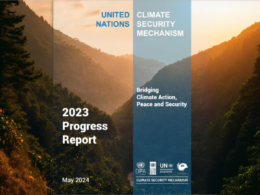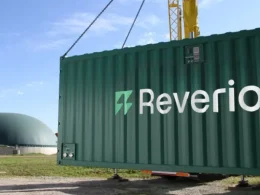Research by Imperial College London has revealed limitations in the speed at which technology can be scaled up to store gigatonnes of carbon dioxide (CO2) under the Earth’s surface.
Current global strategies to limit warming to below 1.5 degrees Celsius by the century’s end depend on removing CO2 from the atmosphere faster than it’s emitted, targeting 1-30 gigatonnes annually by 2050. However, these projections have been speculative, and a new study from Imperial College London shows they may be overly optimistic.
The study indicates that while it might be possible to store up to 16 gigatonnes of CO2 underground annually by 2050, achieving this would require a significant increase in storage capacity and scaling, which seems unlikely given the current pace of investment, development and deployment.
As the UK Government aims to become a clean energy leader by investing in carbon capture and storage, the study highlights the need for realistic expectations about how quickly CO2 can be safely stored underground.
Researchers from Imperial’s Department of Earth Science and Engineering developed models accounting for geological suitability, and technical and economic constraints, showing that while large-scale CO2 reduction is possible, the path and regional contributions might differ from current models, including those in Intergovernmental Panel on Climate Change (IPCC) reports.
Lead author Yuting Zhang, from Imperial’s Department of Earth Science and Engineering said, “There are many factors at play in these projections, including the speed at which reservoirs can be filled as well as other geological, geographical, economic, technological, and political issues. However, our models will help us understand how uncertainty in storage capacity, variations in institutional capacity across regions, and limitations to development might affect climate plans and targets set by policymakers.”
Co-author Dr Samuel Krevor said, “Although storing between six to 16 gigatonnes of CO2 per year to tackle climate change is technically possible, these high projections are much more uncertain than lower ones. This is because there are no existing plans from governments or international agreements to support such a large-scale effort.”
Krevor added, “However, it’s important to keep in mind that five gigatonnes of carbon going into the ground is still a major contribution to climate change mitigation. Our models provide the tools to update current projections with realistic goals for how and where carbon storage should be developed in the next few decades.”
The researchers found that IPCC reports, particularly for Asian countries like China, Indonesia, and South Korea, often overestimate potential CO2 storage rates, making current projections unreliable.
Co-author Professor Christopher Jackson, also from Imperial’s Department of Earth Science and Engineering said, “While integrated assessment models play an important role in helping climate policymakers make decisions, some of the assumptions they make when it comes to storing large amounts of carbon underground appear unrealistic.”
The team’s analysis suggests a more realistic global target of 5-6 gigatonnes of CO2 storage per year by 2050, based on growth patterns from industries like mining and renewable energy. Their new model, using real-world data, provides a more practical approach to predicting the scaling of carbon storage, helping to set achievable goals for the future.
Dr Krevor said, “Our study is the first to apply growth patterns from established industries to CO2 storage. Existing predictions rely on speculative assumptions, but by using historical data and trends from other sectors within the industry, our new model offers a more realistic and practical approach for predicting how quickly carbon storage can be scaled up – helping us set more attainable targets.”





















